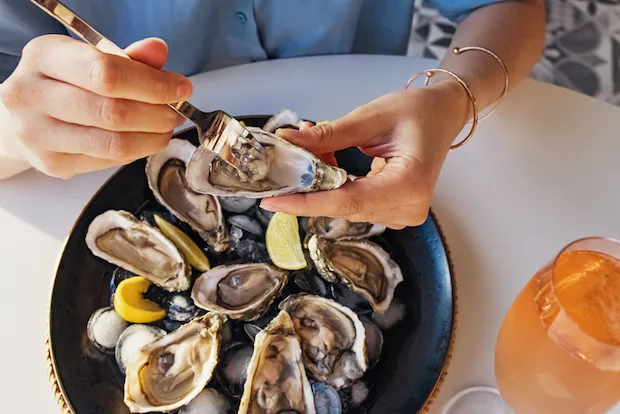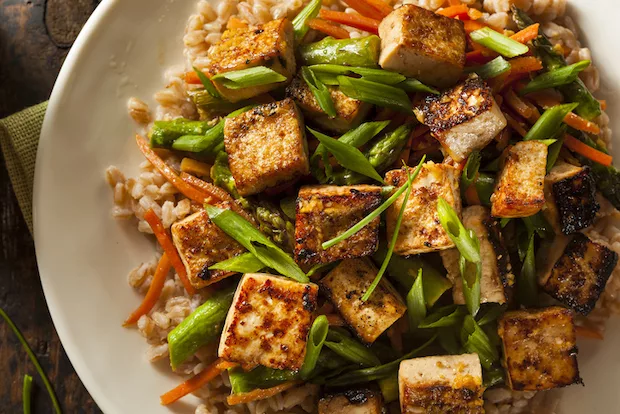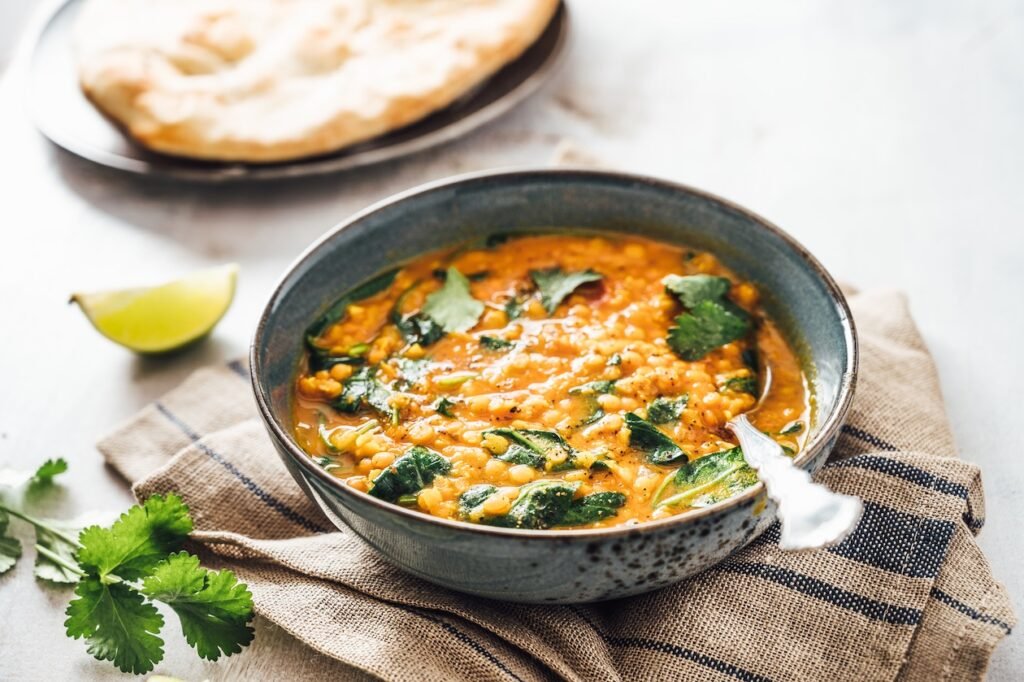Chelsey Amer, MS, RDN, CDN, shares a list of foods high in iron. Plus: why most women and plant-based eaters should be especially mindful of getting enough iron in their diet from food, supplements, or both.
An optimal diet will contain a variety of foods that pack a plethora of vitamins and minerals—and one of the most important minerals to focus on is iron. Fortunately, it’s not too challenging to get enough iron through your regular diet since most of your iron needs are met by recycling your red blood cells. Moreover, a vast array of foods contain iron—but there’s one caveat. Not all iron in these foods is created equally, as some high-iron foods are absorbed better than others. (More on that later.)
Before I share my list of 10 high-iron foods, let’s first cover why this mineral is so important, how much iron you need daily, and more must-know info.
What Does Iron Do in Your Body?
Iron is involved in growth and development. It’s found throughout your body, including in:
- Hemoglobin, a protein found in your red blood cells that carries oxygen throughout the body (low iron = low hemoglobin = no good!)
- Myoglobin, a protein that supplies oxygen to your the cells in your muscles
- Hormone synthesis
- Enzyme function
As a result, if your iron levels drop, you’ll feel the effects in several ways. (Stay tuned for telltale signs and symptoms of low iron levels.)
How much iron do I need?
The recommended daily allowance (RDA) of iron varies based on age, sex, and pregnancy status. Adult women (ages 19-50) require 18 milligrams of iron per day, whereas adult men (ages 19-50) require only eight milligrams of iron per day.
Pregnant and lactating women require even more daily iron, which is why it’s often included in prenatal vitamins. HUM’s Womb Service contains 100 percent of the RDA for pregnant women: 27 milligrams.
Since iron is a key component in red blood cells, it’s not too surprising that menstruating women are more at risk to be iron deficient thanks to their monthly visit from Aunt Flow. It’s essential to replace the iron lost through your period through diet. But that doesn’t mean you need more iron only during your period. One study found that iron supplementation over a period of four weeks was more efficient in raising hemoglobin levels than supplementation for four days during a woman’s period alone. Therefore, it’s important to focus on prioritizing your intake (via iron-rich foods and/or supplementation) all month long.
According to some reports, iron deficiency is the most common worldwide nutritional disorder, impacting 20 to 25 percent of the world’s population. Although statistics vary, an estimated 10 million Americans are iron deficient, including 17 percent of pre-menopausal, non-pregnant women. As we can see, iron deficiency disproportionately impacts women.

Causes of Iron Deficiency
Iron deficiency is typically caused by four main reasons:
- Iron loss through bleeding, heavy periods, endometriosis, fibroids, and blood donations
- A lack of iron in the diet, most often found in vegetarians and people who do not eat enough
- Insufficient iron absorption, as in an individual with a gastrointestinal disorder, such as celiac disease where iron is not properly absorbed
- Pregnancy, where a woman’s blood volume expands, increasing the iron demand. If a woman does not consume sufficient iron she and the baby can be at risk for iron deficiency, which can lead to low birth weight and other adverse effects.
There are several stages of iron deficiency. Initially, your stores may lessen. Eventually, you will have fewer iron-dependent proteins in your blood. Over time, full-blow iron deficiency anemia will present itself with low hemoglobin concentrations.
Symptoms of iron deficiency include:
- Fatigue
- Pale skin
- Weakness
- Dizziness, headache, lightheadedness
- Chest pain or rapid heart rate
- Cold extremities
- Inflammation or soreness of the tongue
- Unusual cravings for non-food items, like ice or dirt
- Poor appetite
Types of Iron
There are two forms of iron found in food: heme iron and non-heme iron.
- Heme iron is the more bioavailable form of iron only found in animal products
- Non-heme iron is less bioavailable, found in plants and iron-fortified foods as well as animal-based products
Of note, vegetarians may be at risk for low iron status without a carefully planned diet and supplementation. They require more dietary iron than meat-eaters because non-heme iron is not absorbed as efficiently as heme iron found in animal products. Studies estimate that approximately 25 to 30 percent of heme iron is absorbed from a food. This may seem lower than you’d expect, but only one to 10 percent of non-heme iron is absorbed.
All said, it’s possible to have sufficient iron status when only consuming non-heme iron. However, your diet must be well planned to ensure you maintain adequate iron levels.

10 High-Iron Foods to Add to Your Diet
1. Oysters
While oysters may not be a staple in your daily diet, just three ounces contain about eight milligrams of iron—which amounts to a whopping 44 percent of your Daily Value (DV) of iron. If you’re at a local seafood restaurant, consider choosing oysters over other fare if you’re looking to boost your iron consumption.
2. White Beans
One cup of white beans also offers around eight milligrams of iron, inching you close to the halfway mark of your DV. However, because this is a plant-based source, it is non-heme iron, which is not absorbed as efficiently in your body.
Tip: Pair white beans (as well as other sources of non-heme iron) with foods rich in vitamin C, which boosts iron absorption. For example, make a white bean salad with tomatoes, bell peppers, and broccoli.
3. Spinach
A half cup of cooked spinach contains three milligrams of iron (or 17 percent of your DV), making it a good plant-based source of the mineral. Spinach is incredibly versatile, so it’s one of the easiest greens to consume daily. Toss a handful (or two) in smoothies, salads, stir frys, pasta dishes, and more.
Tip: Swap kale for spinach in this vitamin C smoothie recipe.
4. Lentils
Like spinach, cooked lentils contain three milligrams of iron (17 percent DV) per half cup, making them a great addition to your iron-rich diet. Even more, lentils are a good source of fiber and plant-based protein, making them a more filling source of iron compared to spinach.

5. Tofu
While red meat is well known as one of the top foods with iron, tofu shouldn’t get snubbed. In fact, a half cup of firm tofu packs over three times as much iron (three milligrams, or 17 percent DV) as red meat. Plus, tofu contains almost no saturated fat. If you’re following a plant-based diet and looking to add more protein *and* iron, tofu is an inexpensive option to have on hand.
Tip: If you’ve never enjoyed tofu, remember to press it before cooking to remove excess water. Tofu then absorbs the flavors you add to it, so try pan-frying before adding a stir fry sauce.
6. Dark Chocolate
Ready for the best news of the day? Your chocolate fix can actually help boost your iron intake. Specifically, one ounce of dark chocolate (at least 45 percent cacao solids) contains an impressive two milligrams mg of iron (11 percent DV). It also contains heart-healthy fats and antioxidants to support your well-being; just remember to enjoy it in moderation.
7. Baked Potato
One of the most underrated foods out there is the mighty potato. Not only does it contain it contain two milligrams of iron (11 percent DV) per serving, but a medium baked potato is the perfect side dish that can cook quickly (microwave shortcuts are A-okay!) and act as a blank canvas for many fun and nutritious toppings. My votes go to broccoli, cheese, beans, and salsa.
8. Iron-Fortified Cereal
In the 1940s, the United States began fortifying ready-to-eat breakfast cereals with iron and other vitamins. To this day, they’re still an excellent source of iron. In fact, many fortified cereals contain 50 to 100 percent of your daily iron needs. Even meeting half of your daily iron needs from your morning bowl of cereal is pretty impressive.
Tip: To make cereal a part of a balanced meal, try adding a significant source of protein, such as Greek yogurt, into the mix.
9. Whole Wheat Bread
If you’re a sandwich lover looking to boost your intake of good-for-you nutrients, one simple swap can help out: choosing whole wheat bread. One slice of whole wheat bread contains one milligram of iron (six percent DV). While this number is quite similar to the iron content of white bread, whole wheat bread also contains more fiber, protein, magnesium, potassium, vitamin B6, and more, making it a much more nutritious choice overall.
10. Chicken, Tuna & Turkey
Many animal-based foods contain about one milligram of iron (six percent DV) per three-ounce serving. However, even if you eat these foods several times per day, you’ll still need to add other iron-rich foods to meet your intake needs.
Should I Take an Iron Supplement?
You may wish to consider adding an iron supplement to your supplement regimen if you do not eat a lot of foods that are high in iron. Based on your diet, lifestyle, and preferences, be sure to check the Daily Value to see if your supplement supplies sufficient iron.
HUM’s Base Control provides 100 percent of the DV of iron (18 milligrams), which meets the requirements for adult women ages 19 to 50.
However, if you’re pregnant, breastfeeding, or thinking about conceiving, you may wish to opt for a prenatal supplement, like Womb Service. Again, it contains 100 percent of the DV of iron (27 milligrams) for pregnant and lactating women.
The Takeaway
While you can find iron in a variety of healthy foods, a well-planned diet is essential to ensure adequate iron intake. Moreover, if you’re in an at-risk group for low iron status, you may benefit from taking a supplement that contains iron with an amount that reaches your demographic’s DV recommendations.

